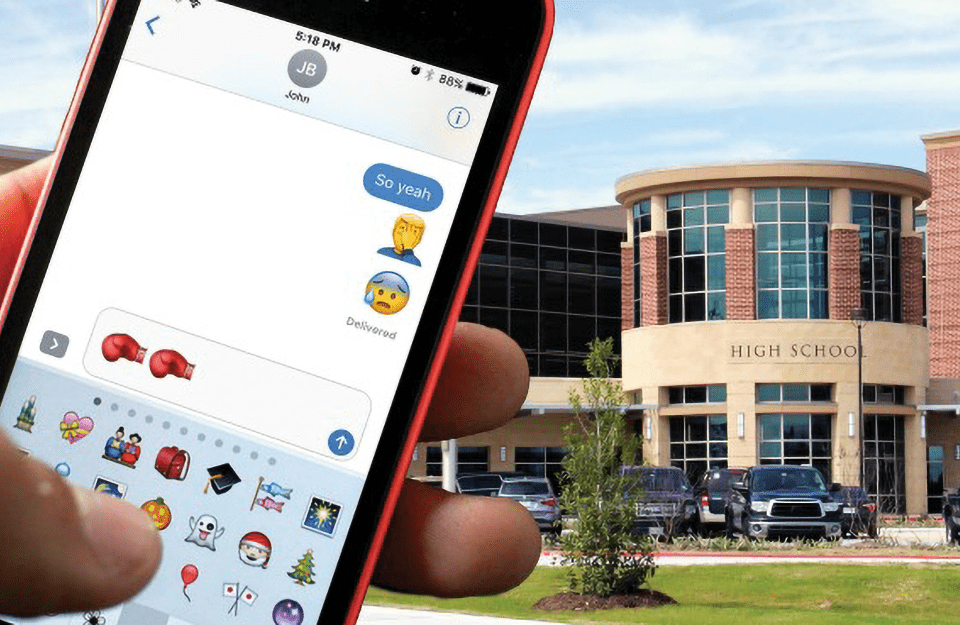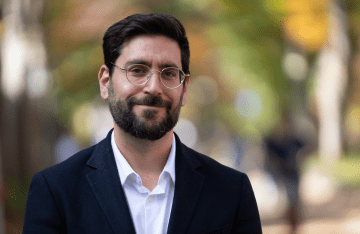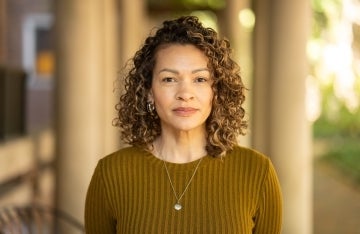Austin Lecture 2017: Social Workers Need to Understand Impact of Cyber-interaction on Adolescents
The future of social work embraces technology and uses it as a tool to better engage with and understand young clients.

Photo Credit: Columbia School of Social Work
Lucille N. Austin, who taught for many years at Columbia University’s School of Social Work, was an early proponent of caseworkers becoming involved directly with children. As she put it in a 1948 paper, a child should be treated “as an active participant in his own fate” and the caseworker should strive to increase the child’s “awareness that he is a not a victim but a person who has a choice about what he is and what he will make of his circumstances.”
After listening to Dr. Jonathan Singer‘s lecture in Lucille N. Austin’s name on March 6, members of the audience, particularly those with young children, could be forgiven for spending a moment or two pining after Professor Austin’s era of pre-digital communications. Dr. Singer showed us that the social worker’s task of directly assisting children has been made exponentially more difficult because of the role of technology, especially social media and texting, in young people’s lives.
Addressing an audience of alumni as well as current students and student prospects, he explained that although technology makes young people’s lives richer in many ways, it provides youth with access to people and ideas that can exacerbate existing mental health problems and suicide risk. In the course of his presentation, he opened the door to a world where adolescents connect with each other primarily through texting or social networking sites—a world that few parents, teachers, and social workers know about let alone have any influence over, which exposes them to potential risks 24/7.
One of Dr. Singer’s most compelling examples consisted of adolescents forming online communities around secret hashtags to share their experiences of practicing self-harm. Hashtags, he said, are a new form of adolescent slang. Sometimes young people use them to signal “I need help.” Other times they use them in ways that encourage self-harm. Online social networks such as Facebook and Instagram, and online crisis and support services, are aware of the most common hashtags and respond when posts indicate risk.
Dr. Singer ended his lecture by asking: At a time when suicide has replaced car accidents as a leading cause of death among 10–14 year olds, and suicide has surpassed homicide as the second leading cause of death among 15–24 year olds, don’t social workers have an obligation to meet their young clients “where they are”? The future of social services will be one where providers work with technology to identify risk and intervene in culturally meaningful ways.
Commenting on Dr. Singer’s presentation were two CSSW faculty members, Dr. Desmond Patton and Dr. Elisabeth Counselman Carpenter, both of whom have worked with many adolescents—Dr. Patton through his research on Internet banging, and Dr. Counselman Carpenter through her educational consulting and private social work practice.
Dr. Patton said that his research on youth involved in gangs on the south side of Chicago had shown that young people use social media in multiple ways that range from sharing love, happiness and joy to inciting dares, trading insults or making threats that sometimes result in homicide or other crimes.
He has coined a term for the latter interactions: Internet banging. His academic research involves partnering with data scientists to automatically code social media exchanges among youth involved in gangs to see if he can pick up the signals for when violence online is likely to translate into violence in real life.
As Dr. Counselman Carpenter sees it, digital communications create more channels through which bullying can take place that aren’t immediately apparent to the families nor to the professionals who are trying to support the victims of such abuse. She cited a couple of examples of clients she had attempted to treat where cyber-bullying had led to a full-blown mental health crisis.
From the presentation:
- Slide deck from Dr. Singer’s presentation (PP: 33 pages)
- Slide deck from Dr. Patton’s presentation (PP: 14 pages)
- Slide deck from Dr. Counselman Carpenter’s presentation (7 pages)
The annual Lucille N. Austin lecture was created in honor of Prof. Austin’s 36 years in social work research. Dr. Singer delivered his lecture, “Signs, Signals, and Symbols: Suicide, Cyberbullying, and Social Media,” on Monday evening, March 6, 2017.
But as Dr. Singer’s interest in combining social work with technology is multi-faceted, the Columbia School of Social Work was able to benefit from his presence beyond a single lecture. A few hours before the Austin Lecture took place, he “talked tech” with Dr. Counselman Carpenter on Facebook Live about the critical importance of tech-savvy social work policy, evaluation and practice in and outside of the classroom.
The morning after the lecture, Dr. Patton interviewed Dr. Singer on camera about the role of technology in social work research. One of their topics was the effort being made by platforms like Facebook and Instagram to create automated messages for users who post certain cues—such as hashtags—or form secret groups indicating they may need help. The two concurred that more work needs to be done as teens are constantly changing the cues, both within and across platforms.
Also, as Dr. Patton pointed out, research into this issue tends to ignore Black populations, with the result that Black teens are vastly under-served on social media platforms as compared to white teens. This disparity has fueled his own research, he said, which involves collaborating with computational linguists and social media engineers to develop new tools for intervention.
You can watch an excerpt from the dialogue between Drs. Patton and Singer here:
As we were preparing this article, we noticed in the news an item about a 13-year-old boy in Michigan who killed himself as the result of a texting prank. This is tragic, and a further reminder of how technology puts teens at risk, and keeps them from seeing themselves as a “person with choices,” as Dr. Austin put it all those years ago.
We thank everyone who participated in this year’s Austin Lecture and surrounding events, and especially our speakers, for their insightful presentations and critical scholarship and activism.
Click here to read the original story from the Columbia School of Social Work.



